Top 11 Poodle Colors from Least to Rarest 2024: Poodles are a breed of dog who are known for their lively personalities, intelligence, and curly, hypoallergenic coats.
They also have a variety of amusing hairstyles and dye jobs. The many different colors that may be found in poodles are a topic that receives significant attention in the world of dog shows, as well as in the world of poodle breeding and training.
Poodle colors are standardized by the American Kennel Club (AKC), and each color can only be produced by a specific set of genetic combinations (with the exception of a few rare exceptions). Below, you can find information about the various colors of poodles and the history behind each one.
Top 11 Poodle Colors from Least to Rarest 2024
1. Black
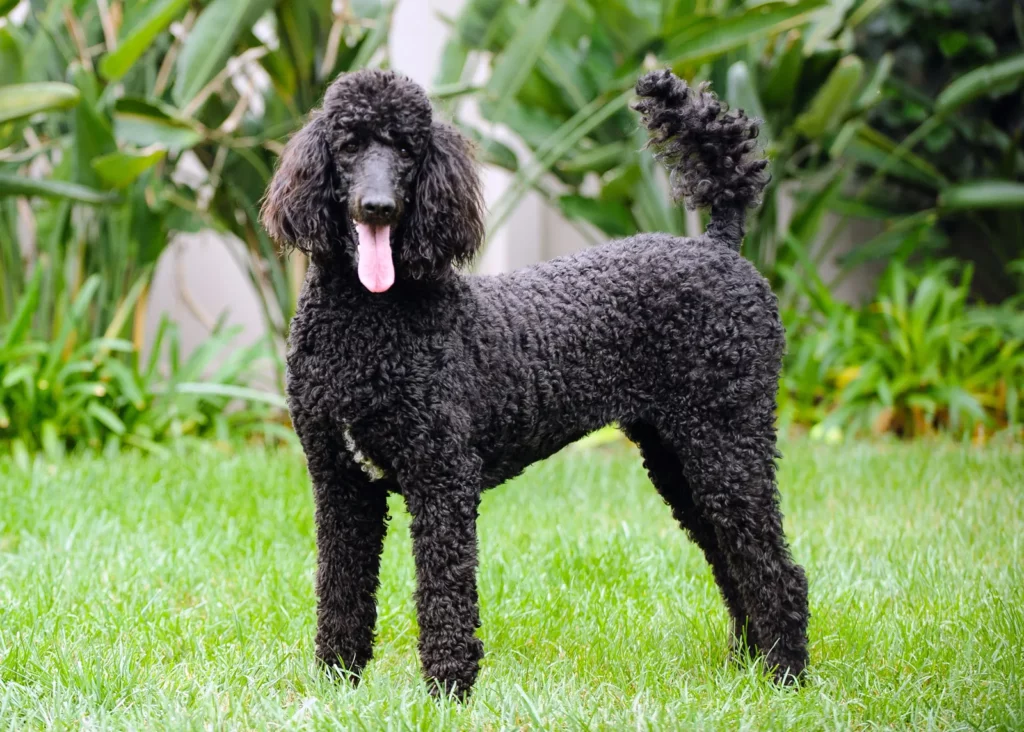
- Color Family: Black
- Parent Colors: Black and anything else, but avoid silvers
The standard poodle comes in a black coat most of the time. Darker tones are generally genetically dominant, which means that they have a greater chance of manifesting themselves when combined with other colors.
A similar line of reasoning may be used for the various hair colors of individuals. Having said that, black poodles who inherit a recessive gene for fading can change their color to grey or blue as they become older, so their original color may not always be retained.
Did you know that Poodles are regarded as one of the smartest dog breeds? This fact helps to explain why they are so popular in dog shows and other competitions that rank obedience and training.
2. Brown
- Color Family: Brown
- Parent Colors: Brown and black
Brown Poodles, just like their black counterparts, are quite frequent because of a dominant gene. Some brown poodles, just like black poodles, have a gene that causes their fur to gradually lose its color over time, transforming the dog into a cafe au lait or silver color.
The introduction of this gene into a canine population through breeding with other colors, such as silver, makes the dogs less desirable in dog shows and other types of competitions.
Did you know that Poodles are frequently bred deliberately in order to produce certain color outcomes, as well as to decrease fading and liver spots?
3. White
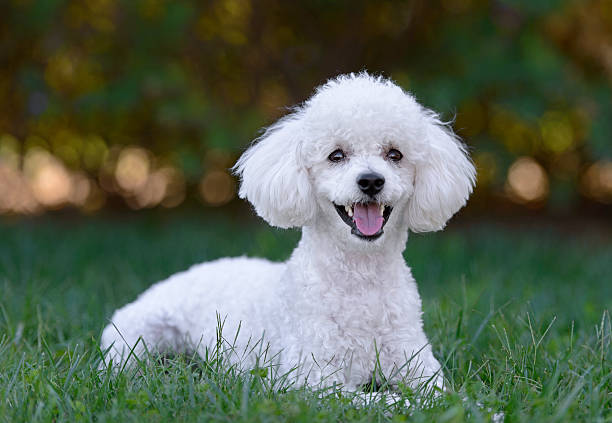
- Color Family: White
- Parent Colors: White, silver, black, blue
Despite the fact that they have a recessive trait, white poodles are not all that uncommon because they are quite popular among people who own dogs.
Breeders make this possible by employing specialized methods that remove any genetic abnormalities from the breeding pool, ensuring that the offspring will always be pure white.
Unfortunately, there may be a connection between color and deafness in dogs. In addition, there are other shades of white, and dog breeders are keen to point out that a cream poodle is not the same as a poodle that is completely white.
Did you know that poodles are hypoallergenic? This is because they do not possess a certain protein that triggers histamine responses in human beings.
4. Blue
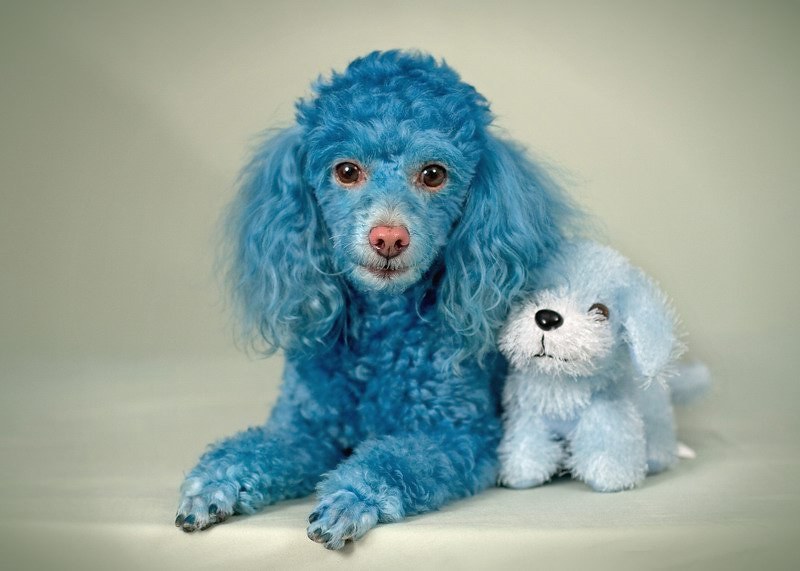
- Color Family: Grey
- Parent Colors: Silver, silver-beige, white, black, and blue
In the same way as a Russian Blue cat is not a true blue cat, a blue poodle is not a true blue poodle either (dye jobs excluded).
A blue poodle, on the other hand, has fur that is a darker shade of silver and carries the gene that causes black fur to lighten with time.
However, they only carry one of these genes, which enables them to retain their original coloration.
Have you any idea?
Because some blue poodles develop a brownish tint as they become older, it might be challenging to register them with the American Kennel Club as having a true blue coat color.
5. Silver
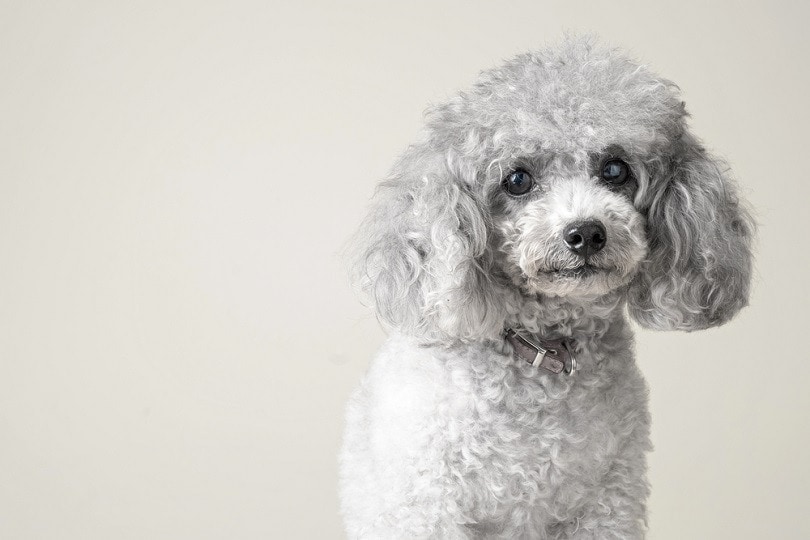
- Color Family: Grey
- Parent Colors: Silver, silver-beige, white, and blue
Because they require two recessive genes, silver poodles are some of the most highly sought dogs, but it is difficult to locate them in nature because the gene combination is required.
Poodles with silver coats are born black, but they carry two genes that cause their color to lighten over time, typically within the first year or two of their lives.
Have you any idea?
In 1874, the Kennel Club in England accepted the first poodle for registration as a breed of dog.
6. Silver Beige
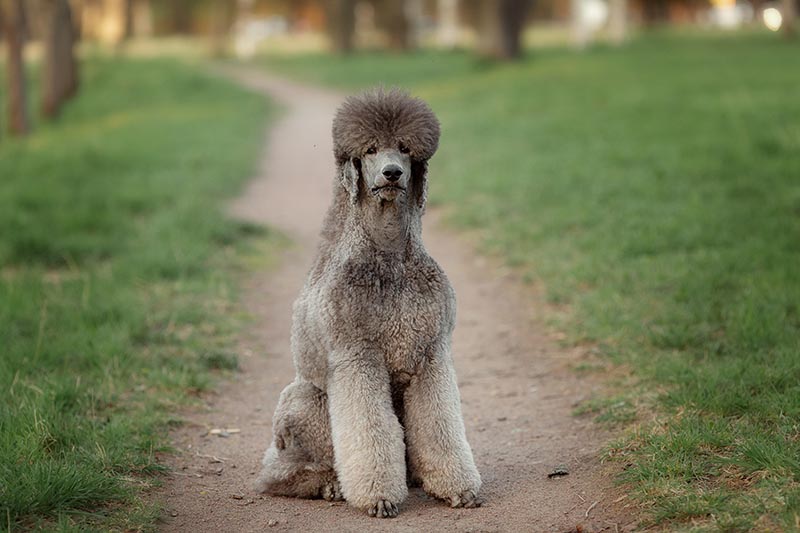
- Color Family: Silver
- Parent Colors: Silver beige, silver, cafe au lait, or blue
Breeding two silver or blue poodles, each of which carries the gene for a brown coat and the recessive fading gene, results in the development of the silver-beige coat color.
As a direct consequence of this, every single poodle that emerges from this litter will have a silver beige coat.
The puppies, just like the majority of other poodles in this color family, are born black or dark brown and gradually lighten as they become older. A genuine silver beige will have a beige appearance with silver fur speckled throughout it.
Did you know that silver or beige poodles with lighter coats are considered more desirable in general?
7. Cafe au Lait
- Color Family: Brown
- Parent Colors: Cafe au lait, brown, silver, and blue
A recessive gene found in brown coats is responsible for the Cafe au Lait pattern. This color, in contrast to silver beige, does not contain any silver and instead has a tone that is more like a dark cream.
The poodles, as a whole, are consistent with the description of “coffee with milk,” although the color shifts over time, as is the case with the majority of coat colors that have faded.
Did you know that the American Kennel Club, widely regarded as the most reputable source of information about dogs, was established in 1884?
8. Sable
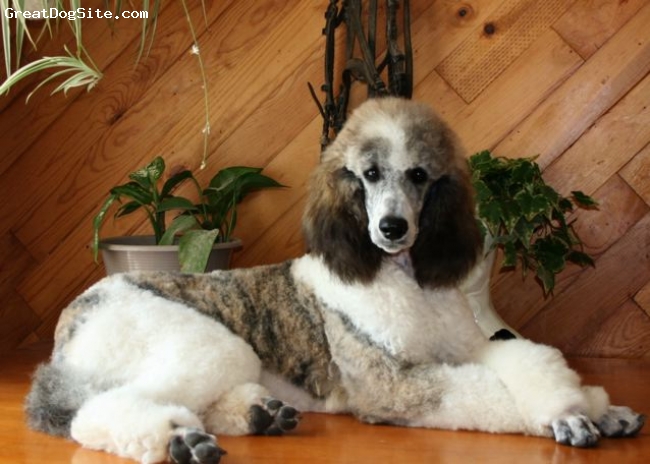
- Color Family: Varies
- Parent Colors: Unclear, but most likely sable and sable
Poodles of varying colors with black tips on their fur are referred to as sable, which is not a color itself.
To put it another way, a sable poodle’s ears do not have the frosted appearance of a standard poodle.
In spite of the fact that a dominant gene is responsible for the sable coat color, sable-colored poodles are extremely uncommon.
This is most likely due to the fact that the black tips fade as the dog ages, which means that older poodles who carry the sable gene may not appear to have it.
In addition, the majority of breeders have a limited understanding of the sable gene, which makes it challenging to breed sable poodles.
Did you know that up to the year 2005, the German Poodle Club would only permit poodles of different colors to breed with one another?
9. Cream
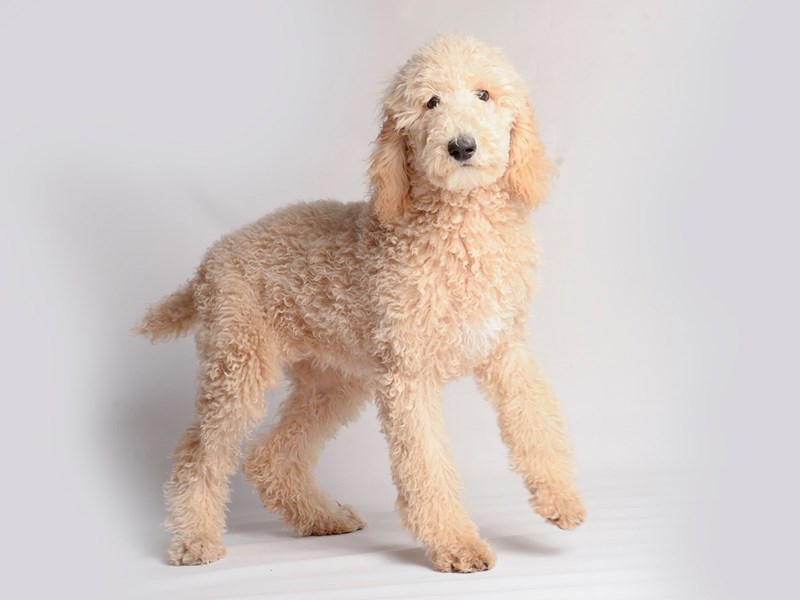
- Color Family: Brown
- Parent Colors: Cream, white, apricot
Due to the fact that it requires a recessive gene in addition to specific breeding, cream poodles are one of the more uncommon colors.
It can also be achieved by adding the chinchilla gene, which is responsible for fading apricot fur, into the breeding process of red poodles.
This is how silver poodles get their fading gene. The cream is especially uncommon since it is frequently confused with the colors white and apricot, which means that cream poodles are frequently misidentified as being the wrong color.
Have you any idea?
Sailor, a poodle, set a new world record in 2016 for the fastest 10-meter walk by taking 33.22 seconds to complete the distance.
10. Red

- Color Family: Red
- Parent Colors: Red and black
Poodles with red coats are hard to come by and can have a wide range of shades. They typically have a fading gene, which causes the redness of their coats to fade with time.
This is the same phenomenon that causes black poodles to turn silver over time. Breeders have postulated that red poodles are the result of a different gene that has been given the name “Rufus.”
Some people feel that the red and apricot genes are related to one another. The color is a secondary one.
Did you know that the American Kennel Club did not recognize the color red for poodles until the year 1980?
11. Apricot
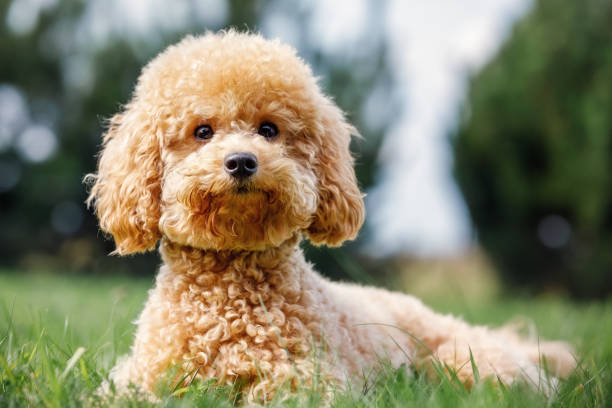
- Color Family: Red
- Parent Colors: Apricot and red
The apricot poodle is the rarest variety of poodle in the world. This color, which is caused by a gene that is recessive, can be described as a very pale shade of red that almost looks like cream.
It is hypothesized that the color apricot was the very last color to evolve in poodles because dogs have been genetically bred for generations to have particular features.
Sowden Yellow Gall, who was born in 1898, is credited as being the first known apricot poodle.
Have you any idea?
1929 was the year that saw the first-ever victory for an apricot poodle at a dog show.
Top 11 Poodle Colors from Least to Rarest – Newshub360.net
Related Post
Credit: www.Newshub360.net

